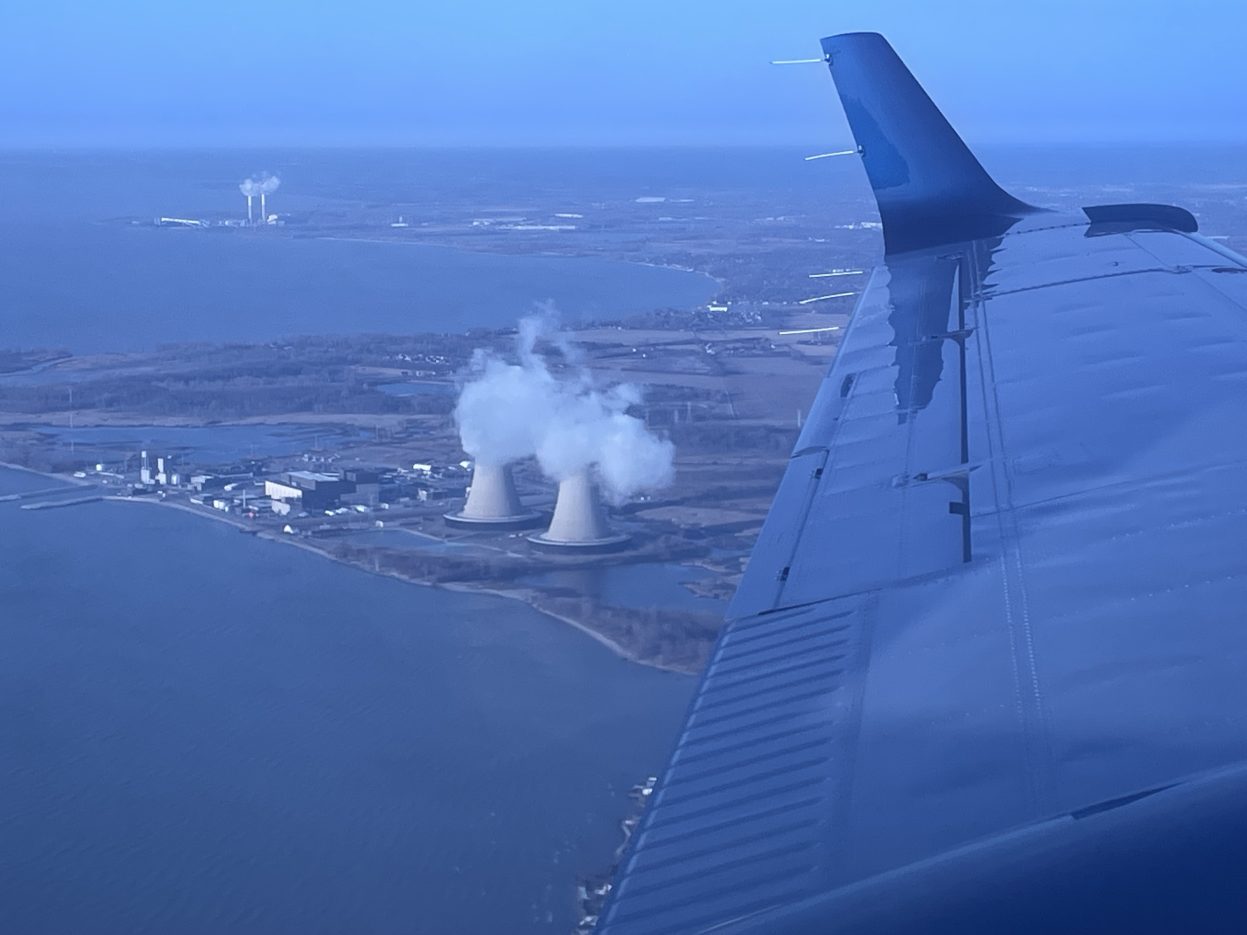Cobalt Magnet 25, a major radiological incident exercise centered in Michigan in March 2025, brought together over 3,000 participants from more than 70 U.S. and Canadian agencies – including the Nevada National Security Sites (NNSS). The exercise was led by the U.S. Department of Energy/National Nuclear Security Administration (DOE/NNSA) and is part of regular training and planning to ensure preparedness against radiological threats, incidents and accidents.
The exercise simulated a radiation release at the fictitious Erie Nuclear Power Plant, providing an excellent opportunity for agencies to evaluate how well they work together.
NNSA’s Nuclear Emergency Support Team (NEST), which includes the NNSS Remote Sensing Laboratory’s (RSL) Aerial Measuring System (AMS), played a key role in the week-long exercise, providing radiological monitoring, assessment and advice to decision-makers at the federal, state and local levels. The AMS team utilized both its fixed-wing aircraft and helicopter to conduct nearly a dozen flights over the “affected” area.
Additionally, RSL’s Consequence Management Home Team and Response Team (CMRT) were both activated to support the event, fielding more than 60 requests to characterize and assess the impacts of the notional radiation release to the public and the environment in the surrounding area. Led by RaJah Mena, CMRT coordinated and dispatched dozens of field teams to collect simulated dose rate and contamination measurements, as well as environmental samples. Paired with the aerial data provided by AMS, this data proved extremely valuable for exercise decisionmakers to take appropriate action.
“Exercises of this magnitude allow us to test and explore our capabilities and capacity in ways that cannot be achieved with more local-focused drills,” said Mena. “Cobalt Magnets give our responders an opportunity to gain experience in their duty positions and work with their partners and peers throughout the radiological/nuclear response community.”
Mena added that, as important as the exercise itself, lessons learned from Cobalt Magnet 25 will be evaluated to help inform future funding and policy decisions.
NEST’s Radiological Assistance Program, Incident Management Team, Nuclear Incident Team, and Radiation Emergency Assistance Center/Training Site Team also participated. Cobalt Magnet 25 was the third exercise since the inception of the exercise series and represented the culmination of 18 months of extensive planning by local, state, provincial and federal responders.


